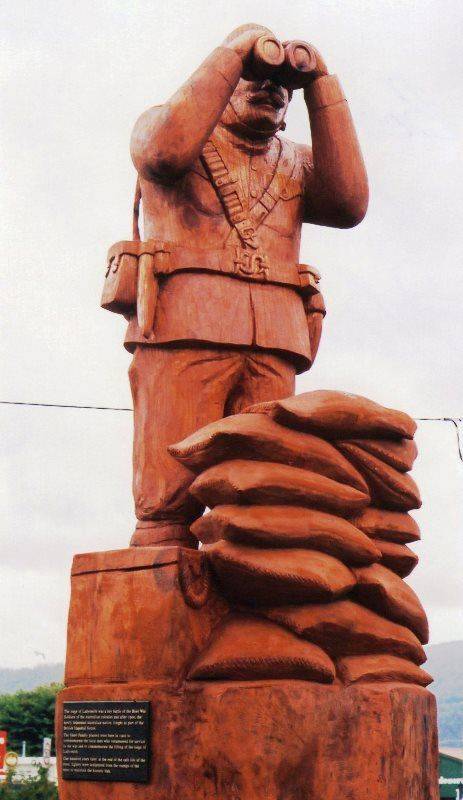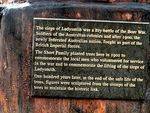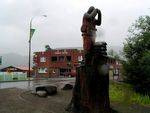
Siege of LadysmithPrint Page 
The wooden sculpture commemorates the Siege of Ladysmith during the South African (Boer) War.
Trees were originally planted by the Short family in 1902 to commemorate local men who had volunteered for service and the lifting of the siege of Ladysmith during the South African War. One hundred years later at the end of the safe life of the trees figures were sculptured to maintain the historic link.
The world-famous 118-day siege of Ladysmith by Boer forces took place between 2 November 1899 and 28 February 1900. By 2 November 1899, Ladysmith was effectively besieged, and the first Long Tom shell caused much panic and alarm, many inhabitants took shelter in hollows in the banks of the Klip River, which flows through the town.
By mid-December the siege had begun to take its toll and severe shortages of food and other supplies were being experienced. On 28 February 1900, General Buller finally arrived with his army to break through the Boer line along the uThukela River. Ladysmith was finally relieved after a siege that had lasted 118 days.
Location
| Address: | Short Street, In park near bridge, Huonville, 7109 |
|---|---|
| State: | TAS |
| Area: | AUS |
| GPS Coordinates: | Lat: -43.032866 Long: 147.046876 Note: GPS Coordinates are approximate. |
Details
| Monument Type: | Sculpture |
|---|---|
| Monument Theme: | Conflict |
| Sub-Theme: | Boer |
| Actual Event Start Date: | 11-October-1899 |
| Actual Event End Date: | 01-June-1902 |
| Designer: | Roland Gabatel |
Dedication
| Approx. Monument Dedication Date: | Planted 1902 , Sculptured 2002 |
|---|
The Siege of Ladysmith was a key battle of the Boer War. Soldiers of the Australian colonies and after 1900, the newly federated Australian nation, fought as part of the British Imperial Forces.
The Short Family planted trees here in 1902 to commemorate the local men who volunteered for service in the war and to commemorate the lifting of the siege of Ladysmith.
One hundred years later, at the end of a safe life of the trees, figures were sculptured from the stumps of the trees to maintain the historic link








